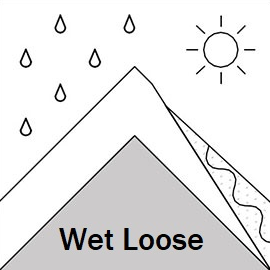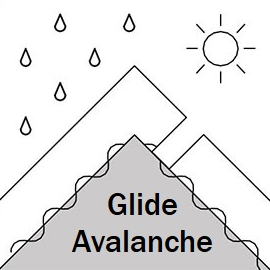Gudauri
Natural avalanches are unlikely, human-triggered avalanches are possible. Small avalanches in specific areas, or large avalanches in isolated areas.
This is our final forecast for the season. Spring conditions are in place and wet snow and glide slabs are the main dangers. The weather could still change, and new snow and winds could create new problems. Do your research, choose safe routes and have a great spring! Keep watching our website and Facebook page for announcements about next year. We need your help and support to continue this service into the future!
Forecast issued at: 14 April 2024 00:00
Forecast valid until: 14 May 2024 00:00
Forecaster: Manu Greer
High Alpine
> 2600m
2 Moderate
Heightened avalanche conditions on specific terrain features. Evaluate snow and terrain carefully; identify features of concern.
Alpine
2000m - 2600m
2 Moderate
Heightened avalanche conditions on specific terrain features. Evaluate snow and terrain carefully; identify features of concern.
Sub Alpine
< 2000m
1 Low
Generally safe avalanche conditions. Watch for unstable snow on isolated terrain features.
Avalanche Problems
Loose Wet

Wet loose slides often start from steep, rocky areas as they absorb heat during the day. Afternoon is more dangerous. Rain can also trigger these slides.
| Sensitivity | The specific avalanche problem type is reactive to human rider triggers. Easy to trigger with ski cut. |
| Distribution | Many locations. Evidence for instabilities is frequently found, in many locations. |
| Time of Day | All day |
| Trend | Deteriorating |
| Confidence | Moderate |
Persistent Slab

In high alpine areas buried instabilities can still be found. They are more likely to be found on northern slopes and areas with a low snow depth.
| Sensitivity | The specific avalanche problem type is difficult to trigger with a human rider. |
| Distribution | Specific areas, with common characteristics. Evidence for instabilities exists, but it is not obvious and finding it requires careful observations. |
| Time of Day | All day |
| Trend | Improving |
| Confidence | Moderate |
Glide

These are common avalanches in this area and are more active when the temperature is warm. They can be large and dangerous, and slopes that can slide can often be recognised by horizontal cracks in the snow. Choose safer routes and don't stop under areas where these slabs could happen.
| Sensitivity | The specific avalanche problem type is difficult to trigger with a human rider. |
| Distribution | Specific areas, with common characteristics. Evidence for instabilities exists, but it is not obvious and finding it requires careful observations. |
| Time of Day | Afternoon |
| Trend | No change |
| Confidence | Moderate |
Recent Avalanches and Snowpack
Recent avalanche activity:
Multiple loose wet and glide slab avalanches in early April, including heat-triggered wet-slab avalanches that failed on facets in shallow areas.
Snowpack:
Although very warm temperatures have stabilised previous weak snow layers, at high elevation in shady areas where the snow is shallow, weak snow layers could still be found. Below 2000 m there is little snow left, and the snowline will creep higher over the next weeks. The snowpack is in a spring melt / freeze cycle, with solid frozen surfaces in the morning, often becoming unstable in steep and sunny areas from midday onwards. Storms could still bring new wind slab or storm snow avalanche problems - be aware of recent weather.
Weather
Disclaimer
Our avalanche forecasters are internationally qualified and experienced professionals, and data is provided by skilled observers. We encourage you to make your own observations and decisions, without relying solely on our forecast, since any forecast is a generalised 'best guess', and in certain cases it might be inaccurate. We can not be held liable for any actions you take in the backcountry that may result in injury, loss or death.